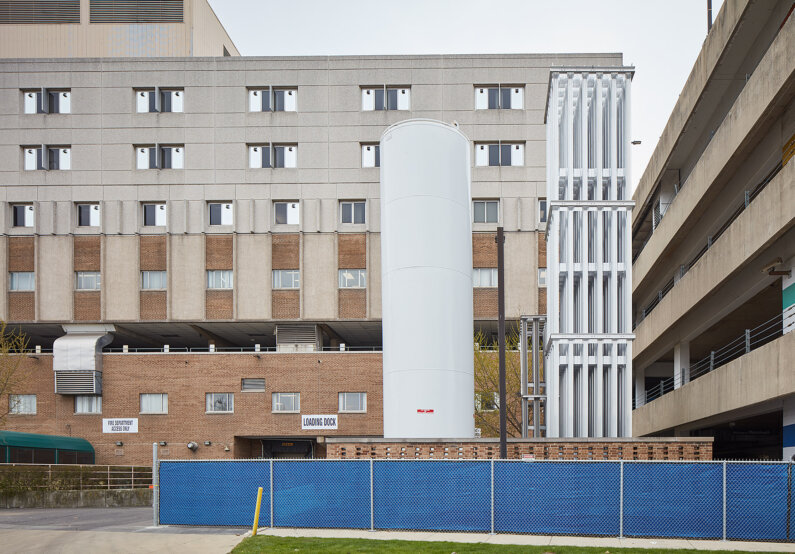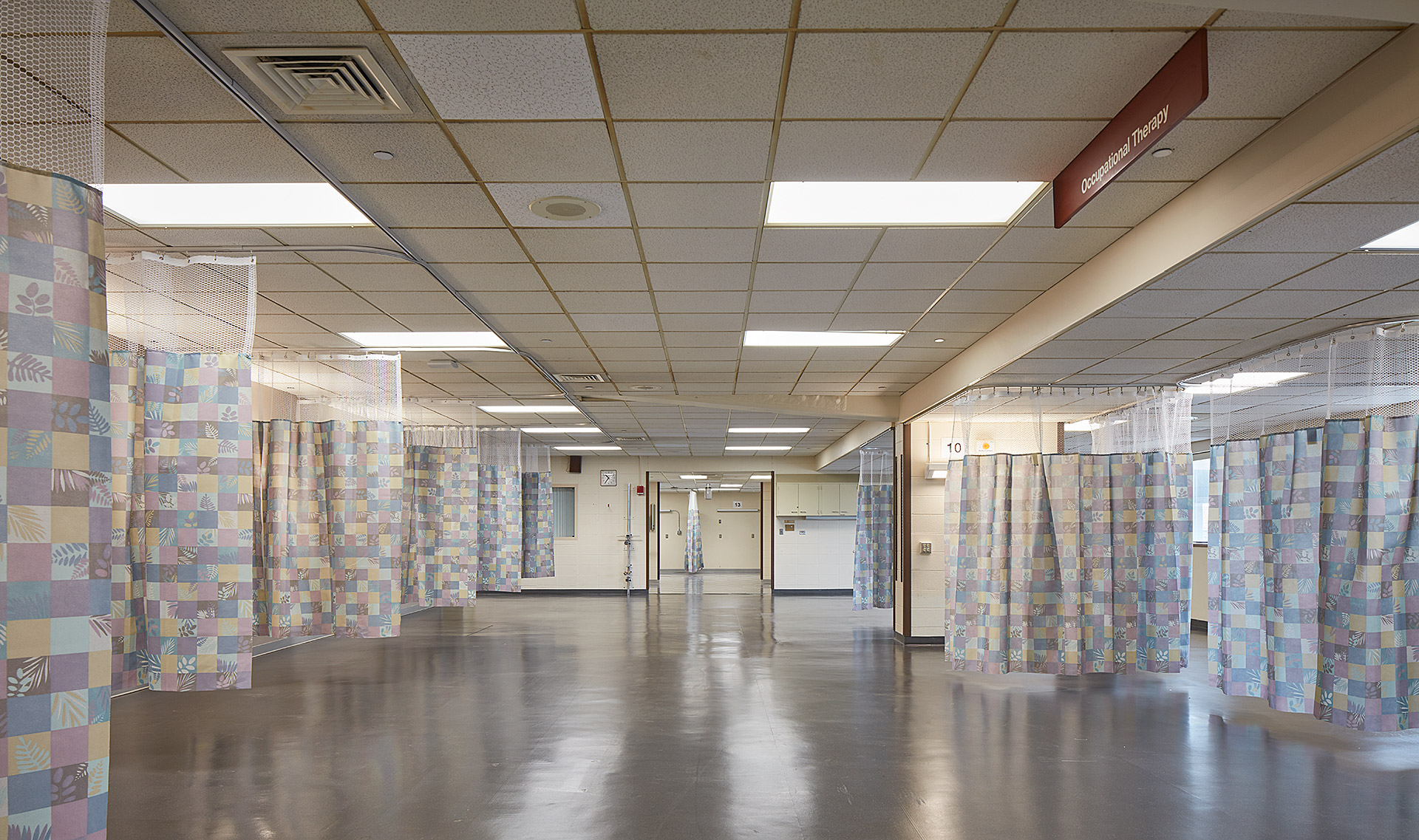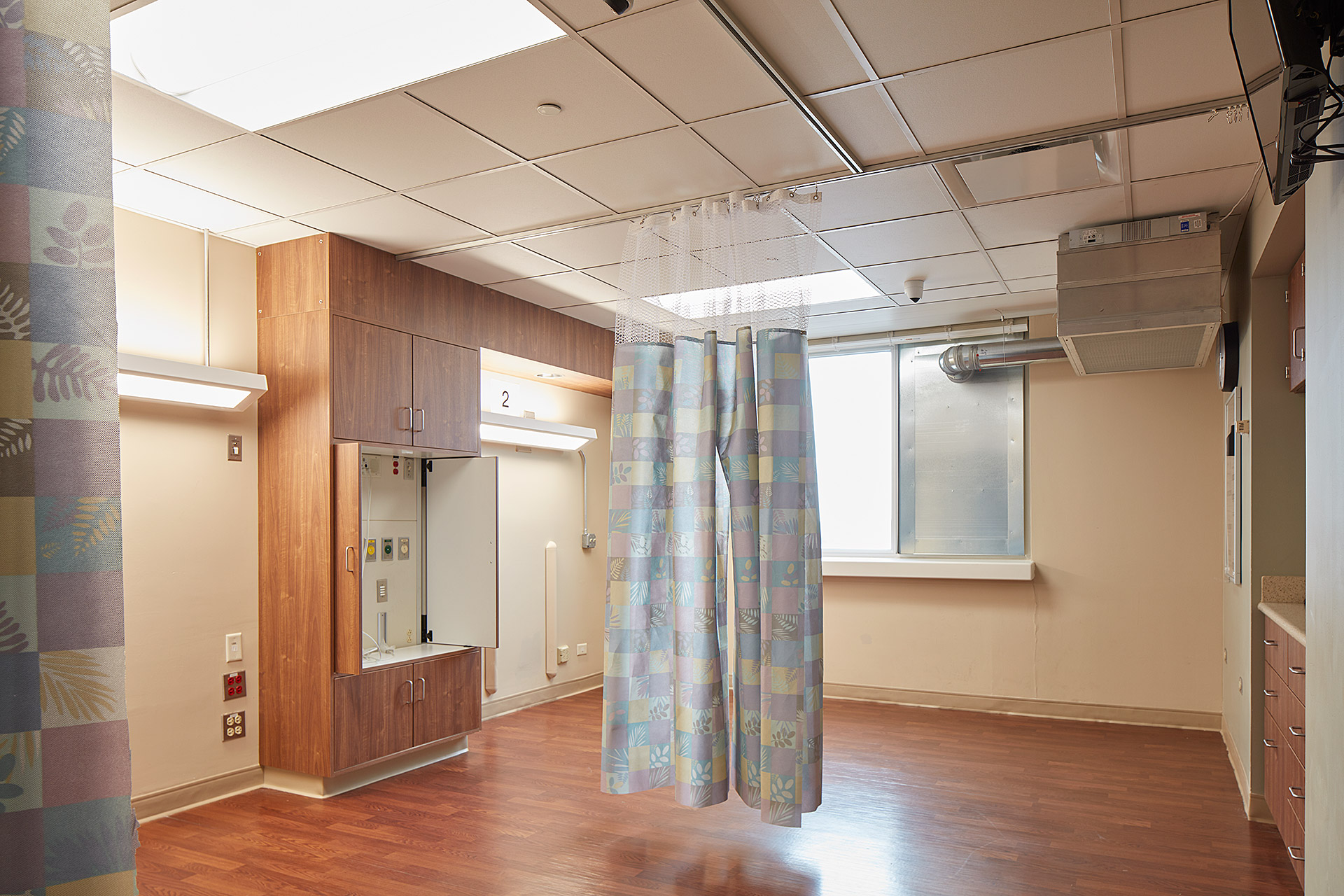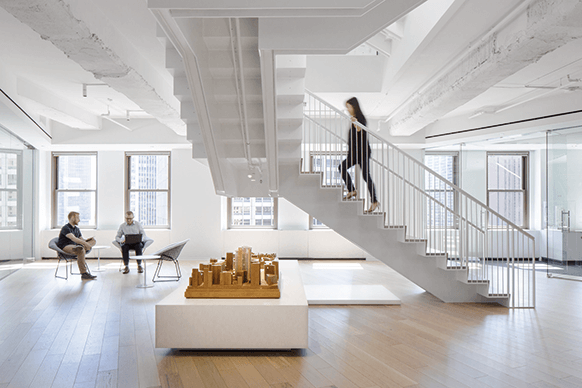It’s not every day that the U.S. Army Corp of Engineers (USACE) comes knocking. We responded to their solicitation to turn the shuttered MetroSouth Medical Center in Blue Island, Illinois into an Alternate Care Facility (ACF), joining forces with design-build partners Clark Construction. Uncertainty was high in those early weeks of the pandemic, but one thing was certain: We were in for a challenge. The facility would need to be functional and able to serve COVID patients in less than one month. Similar to the other ACF we were about to begin work on at the former Sherman Center Street Campus in Elgin, Illinois, this RFP was released on a Friday night and due Saturday at noon. The project was awarded Sunday evening. By Monday, dozens of contractors, sub-contractors, designers, and engineers were ready to get to work.


How we made the right decisions with the right people, sometimes in a matter of minutes, to keep the project moving
On this fast-paced project, decisions had to be made at lightning speed to keep hundreds of tradespeople working efficiently throughout the day.
The key was frequent touchpoints so decisions could be made as a cohesive team. The days kicked off with early morning all-hands meetings between the design-build team, USACE, and the Illinois Department of Public Health (IDPH), and ended with a wrap-up to identify key action items so team members could continue to work into the evening on open items, ensuring that the contractor had answers by the time they started construction again in the morning.
Communication was streamlined through the creation of squad leaders—designated construction project managers for each discipline. There was no complex hierarchical communication chart. Rather, everyone knew exactly whom to go to depending on the type of question.
The Perkins&Will team was on site seven days a week to ensure constant presence for real–time problem solving, and the design, construction and client teams shared workspace in an adjacent administrative building allowing for a lean “Big-Room” type environment for enhanced collaboration.
This project posed several unique challenges:
Most of the challenges at MetroSouth stemmed from the fact that we were building a temporary Alternate Care Facility in a shuttered building that was an operating hospital just six months prior. The space had been intended for inpatient care, but the existing systems needed to be brought up to working order. All medical gases were deactivated and had to be re-certified. Maintenance had been deferred for several years, making this a highly complex process. It took a significant effort to pinpoint just where deficiencies were occurring within the 500,000-square-foot facility.
Even though only COVID+ patients were to be treated at MetroSouth, separating circulation flows into and within the building for the safety of staff was still imperative, particularly in terms of contaminated versus non-contaminated materials. New designated clean and soiled paths and ante rooms for PPE donning had to be created.
Most new hospitals are built with a minimum of 10% isolation rooms and the ability to make entire floors negative pressure. The MetroSouth facility dates primarily from the 1960s and 1980s and did not have that advantage, so negative air had to be created through fan filter units (FFUs) in each individual inpatient room. The FFUs helped not only to remove air from the building and create negative pressure, but also improved air quality by increasing the number of air changes per hour and adding HEPA filtration.
How our team and Clark Construction tailored the process to meet these challenges in the given time frame:
The sheer size of the building, short timeline, and the lack of existing digital drawings prohibited the design team from providing typical construction documents to the contractor. Instead, the Design Build team took the following approach:
- Assess and create a matrix of existing conditions per room (med gas outlets, emergency power outlets, flooring type, lighting, etc.).
- Define typical infrastructure requirements for each patient space typology (i.e., Tier 1, Tier 2, Tier 3).
- Create drawings indicating where each patient headwall would be located and what level of care would be provided at that location
- Collect estimates from contractors for quantities based upon the delta between existing conditions (number one above) and bed location drawings (number three above).
- Mock-up a typical patient room.
- Refurbish and build all patient spaces.
Employing the above process, trust between the design and construction teams, and quality trade partners allowed concept design type diagrams to be used to successfully direct construction.

How IDPH’s Level of Care Requirements informed planning:
Establishment of infrastructure requirements for each level of care (Tier 1, Tier 2 and Tier 3) was critical to determine capacity within the MetroSouth facility. The MetroSouth design–build team met almost daily with IDPH clinical representatives and USACE team members during the first week of the project to collaboratively establish these requirements.
The complexities of the coronavirus were still being uncovered as we sat around makeshift conference tables in lobbies and waiting rooms to determine these criteria. Clinical input from IDPH was crucial in understanding the infrastructure needs required to treat the virus. Clark Construction and trade partners provided input on constructability issues, while the Perkins&Will and Salas O’Brien teams advised on medical planning and best practices. Together, we created a new set of Tier space guidelines to establish the building blocks for the MetroSouth Alternate Care Facility (ACF).
What we needed to determine on Day One for a project like this to work:
Assess the space and clearly define the needs. When dozens of design–build team members arrived on site the morning after being awarded the project, none of us had seen the facility first-hand, let alone known the scope of the transformation into an Alternate Care Facility.
The intent was clear: create as many beds as possible within the allotted time frame, while still being strategic in our planning. To define this scope, we quickly assessed the clinical spaces throughout the hospital to determine potential for patient beds. We used a red-green-yellow light system to determine the feasibility of converting spaces to patient care areas, and this system helped maintain clarity for all parts of the process.
The assessment and stop light tool were cross referenced with the levels of care to determine overall potential beds. We completed all of this within the first week to narrow down scope for the required guaranteed maximum price (GMP).

Some key lessons were learned that can be applied to project delivery in the future:
Teamwork really does make the “dream” work—or, at least, gets the mission accomplished! On the first day on the project, many of us saw what felt like an insurmountable task. And it would have been—if not for the strong collaboration between the contractor, designers, subcontractors, tradespeople, and owner. The team environment we all built together was integral to a smooth project delivery.
The value of a clear goal: The clearly defined mission to provide patient care spaces to support our own community kept the team laser focused.
The benefits of a streamlined process: A mission of this magnitude in such a short time frame leaves no room for waste or inefficiencies in the project delivery. The design and construction had to be lean; that meant limited documentation (RFIs, meeting minutes, submittals), increased but efficient communication, and an incredible amount of trust in each other. While we do not anticipate the elimination of RFIs, meeting minutes, or submittals on future projects, we will certainly adopt some of the same lean principles used at MetroSouth on future projects.
